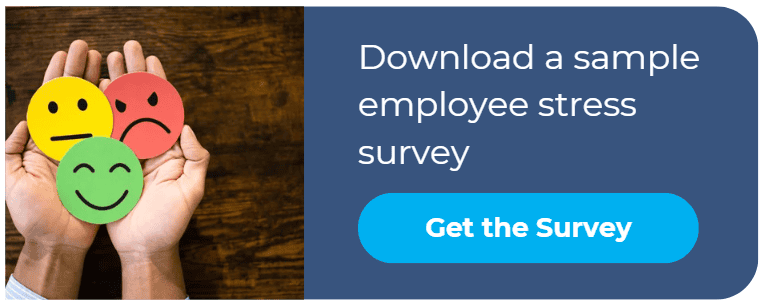Promoting Heart Health in the Workplace
Putting employee health first isn’t just smart for business — it’s a way to show you truly care about the people who make it all happen. Heart health, in particular, is so important, but it’s easy to overlook in the rush of everyday work life.
Because work is linked to 10–20% of all cardiovascular disease deaths in working-age populations, it’s important for organizations to know how to promote heart health at work. This article explores how employers can support their people with practical ways to create a healthier work environment.
Helping Employees Lead Healthier Lives
In this post:
1. The Impact of Heart Health on the Workforce
2. Heart-Healthy Strategies in the Workplace
The Impact of Heart Health on the Workforce
The energy and dynamics of a workplace are quietly shaped by how strong and balanced employees feel. Challenges like sedentary lifestyles, high stress, and poor diet negatively impact the focus you bring to a meeting, creativity for problem-solving, and stamina to get through a busy day.
Successful leaders recognize where the human element intersects with organizational success. More than reducing absenteeism and healthcare costs, heart-healthy teams feed the culture of the workplace with productivity, engagement, and resilience. Supporting heart health at work is a powerful way to invest in employees and create an environment where business thrives.
Heart-Healthy Strategies in the Workplace
A heart-healthy workplace doesn’t happen overnight — it involves healthy habit-building with small, thoughtful daily actions that show employees their well-being matters.
Raising Awareness
Awareness is the first step toward change, and when it comes to health topics, education and engagement go hand-in-hand. Celebrating American Heart Month (in February) is a great opportunity to bring heart health into focus. This can include onsite blood pressure screenings, step and/or hydration challenges, and publicly recognizing employees who successfully sustain a heart-healthy lifestyle.
Pair actionable activities with virtual or onsite health talks with experts. Health talks equip employees with foundational knowledge, interesting facts, practical advice, and answers to any questions they may have. Education inspires people to make informed choices and to understand how they can be proactive in protecting their health.
Encouraging Movement
Incorporating more movement into the workday doesn’t have to disrupt productivity — it can actually enhance it. Serious heart health risks are associated with prolonged sitting, and simple changes like standing desks, stretching breaks, or walking pads help mitigate these risks while boosting brain power.
Walking is a true champion for improving health and well-being. It’s a low-impact way to strengthen the heart, reduce stress, release mood-boosting endorphins, and support joint health. Organizations can encourage employees to take short, regular walking breaks, facilitate walking meetings, or even organize walking groups for those who thrive on connection.
With space and resources, onsite fitness facilities and/or classes are a convenient and accessible way to make movement a natural part of employees’ routine (or virtual classes for remote/nationwide populations). They help prioritize physical activity without compromising work commitments. We often receive messages from employees like the following:
“I’d like to say thank you for these classes. They have been extremely enjoyable for me and have kept me moving during a day with so many meetings.”
Nutrition Education
What we eat has a profound impact on heart health, and the work environment inherently influences our decisions. Organizations can encourage healthier eating habits by providing nutrient-dense choices in meetings, breakrooms, or vending machines, such as:
- Fresh and dried fruits
- Mixed nuts
- Roasted chickpeas
- Protein bars (with clean ingredients)
- Dark chocolate
- Jerky or salami
- Greek yogurt cups
- Hummus snack packs
- Cheese sticks
Offering snacks that fuel the body without sacrificing flavor makes it easier for employees to stay away from convenient, yet processed, high-sugar alternatives.
Nutrition is consistently one of the most popular topics employees want to explore during health talks. Tips for decoding food labels, shopping and meal prep guides, managing chronic diseases, and learning how to eat a balanced diet are just some of the many ways experts impart actionable advice and inspire better choices.
Bring nutrition education to life with healthy cooking demos. Employees cook along with a chef in their own home to practice preparing heart-healthy meals. This hands-on experience builds confidence, nurtures creativity in the kitchen, and helps incorporate healthy food as part of their lifestyle.
Check out 5 Brain-Boosting Foods to Eat Daily.
Stress Management
We all deal with stress at work, but with the right tools and support, employees can protect their heart health by building resilience through challenges. As a foundation, organizations should offer mental health support with access to counselors, virtual therapists, or an Employee Assistance Program (EAP).
Allow frontline leaders to encourage their teams to take regular 5–10-minute breaks away from screens to stretch or walk. This simple practice regulates the nervous system, releases endorphins, and restores energy.
Supportive workplace policies are vital for reducing burnout, turnover rates, and absenteeism. Flexible scheduling, reasonable workloads, proper staffing, and a culture that respects boundaries are examples of heart-healthy workplace policies. Employees should feel comfortable using their PTO, confident that there is coverage for work to run smoothly while they’re away recharging.
Organizations can offer stress management classes to help employees avoid overwhelm and regulate their emotions. These classes teach mindfulness and relaxation techniques for building resilience, finding balance, and communicating effectively.
Learn 5 Expert Tips to Help Employees Master Weight Management.
Lower Work-Related Stressors
The stress we face in our personal lives is heavy enough — strong leadership can ease the load by reducing unnecessary stressors at work. From workloads and deadlines to the environment and systems, help ensure work isn’t adding to the weight with a compassionate culture.
It’s as simple as listening to your people. Honest feedback — whether through surveys, anonymous forms, or casual conversations — can uncover the real sources of stress. Build trust by actively listening, asking questions, and taking steps to relieve pressure.
Some examples of lowering work-related stressors are:
- Manageable workloads
- Prioritized deadlines
- Clear expectations
- Proper staffing
- Thorough onboarding, training, and development
- Limited mandatory overtime
- Offering family sick leave
- Competitive pay rates and regular reviews
Taking care of employees allows them to show up as their best selves, driving higher productivity and deeper engagement.
Strive Workplace Heart Health Initiatives
Strive makes it easy for employees to become proactive about their heart health with education and wellness opportunities. Our fitness, nutrition, and stress management initiatives provide tools and support for healthy habit-building and creating a culture of health.
Book a discovery call to explore how you can make a real impact in your organization!




